
Coleophora serratella is a moth of the family Coleophoridae. It is found in Europe, Japan (Hokkaido) and North America.

Eupselia satrapella is a species of moth of the family Depressariidae. It is found in Australia, where it has been recorded from Queensland, New South Wales and the Australian Capital Territory.

Lampronia corticella, the raspberry moth, is a moth of the family Prodoxidae. The species was first described by Carl Linnaeus in his 1758 10th edition of Systema Naturae. It is found in most of Europe, except Iceland, the Iberian Peninsula and the Balkan Peninsula. It is an introduced species in North America, where it was first detected in New Brunswick, Canada, in 1936.

Sphenarches zanclistes is a moth of the family Pterophoridae that is found in Australia.

Leucoptera laburnella is a moth in the family Lyonetiidae. It is found in most of Europe, except the European part of Russia and the southern part of the Balkan Peninsula. It is also found in North America.

Parornix betulae is a moth of the family Gracillariidae. It is known from all of Europe, east to Korea. It was recently reported from Canada, with records from Québec, Ontario and British Columbia.
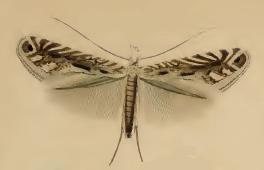
Parornix devoniella is a moth of the family Gracillariidae. It is known from all of Europe.
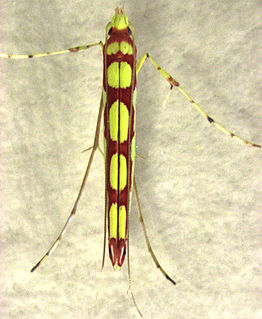
Macarostola miniella is a species of moth in the family Gracillariidae. It is endemic to New Zealand. This species is only found in the North Island and the adult moths have two different colour variations.
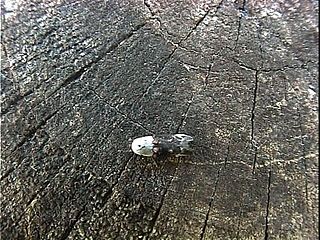
Trachypepla euryleucota is a species of moth in the family Oecophoridae. It is endemic to New Zealand.
Coleophora adspersella is a moth of the family Coleophoridae. It is found in most of Europe, except the Iberian Peninsula, Switzerland and Slovenia. It is also found in China. It occurs in forest and forest steppe biotopes, and in anthropogenic landscapes where the food plant occurs.
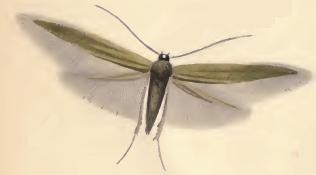
Coleophora paripennella is a moth of the family Coleophoridae. It is found in most of Europe, except the Iberian Peninsula and Balkan Peninsula.
Agdistopis sinhala is a moth of the family Macropiratidae. It is found in south-east Asia, including Sri Lanka, India, Japan and Taiwan.

Aristotelia roseosuffusella, the pink-washed aristotelia, clover aristotelia moth or garden webworm, is a moth in the family Gelechiidae. It is found in North America, including Alabama, Georgia, Illinois, Kentucky, Maryland, Massachusetts, Michigan, New Jersey, Oklahoma, Ontario, South Carolina, Tennessee and Virginia. The species was first described by James Brackenridge Clemens in 1860.

Swammerdamia caesiella is a moth of the family Yponomeutidae. It is found from most of Europe to Japan. It is also present in North America, where it is possibly an introduced species.
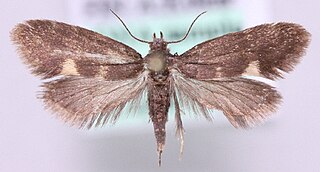
Lampronia morosa is a moth of the family Prodoxidae. It is found in most of Europe, except Ireland, Latvia, Lithuania, Portugal and part of the Balkan Peninsula. It is also present in the Caucasus and Asia Minor.
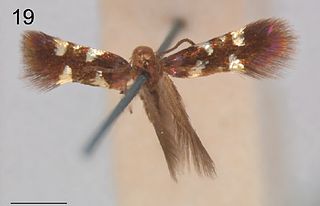
Antispila aristarcha is a moth of the family Heliozelidae. It was described by Edward Meyrick in 1916. It is found in India.
Antispila distyliella is a moth of the family Heliozelidae. It is found on the Ryukyu Islands in Japan.
Antispila uenoi is a moth of the family Heliozelidae. It was described by Kuroko in 1987. It is found in Japan. In 2018, the species was found from China.

Stathmopoda campylocha is a species of moth in the family Stathmopodidae. It is endemic to New Zealand. It is classified as critically endangered by the Department of Conservation.

Epinotia nemorivaga, the bearberry bell, is a species of moth in the family Tortricidae. It is found in Europe and Asia.












